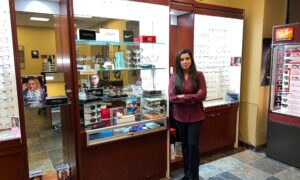Oct. 15, 2020
 A new study by researchers at the University of Houston College of Optometry aimed to gauge the potential myopia risk from near work using an objective continuously measuring range finding device to examine view behaviors.
A new study by researchers at the University of Houston College of Optometry aimed to gauge the potential myopia risk from near work using an objective continuously measuring range finding device to examine view behaviors.
Near work is potential risk factor for myopia. However, evidence supporting a role for near work in refractive error development is conflicting, which may be due to the subjective nature in which near work is traditionally quantified. The purpose of this study was to use an objective, continuously measuring range finding device to examine viewing behaviors during various near tasks in children.
Viewing behaviors were assessed in 10 non-myopic and 10 myopic children (ages 13.87 ± 4.42 years) using the Clouclip, an objective spectacle mounted rangefinder, during five 15 minutes near tasks, including a) passive reading of printed material, b) active writing on printed material, c) passive viewing on an iPad, d) active engagement on an iPad, and e) active engagement on a cell phone. The Clouclip was mounted to the subject’s glasses or on provided spectacles with plano lenses. For each task, distances were also measured with a ruler, and photographs were captured to measured head declination and calculate viewing angle. Average viewing distances, Harmon distance, and the number of viewing breaks (looking at a distance >1 m) for each task were compared using two way repeated measured ANOVAs with gender and refractive status as the between-subjects factors.
The authors, Lisa Ostrin, OD, PhD, FAAO, and Khob Bhandari, B. Optom, PhD student, presented the work during during Academy 2020 at Home by the American Academy of Optometry. In this pilot study, objective measures of viewing behaviors showed that children demonstrate differing viewing distances and viewing angles based on the type of near task they are performing. They did not find find differences in viewing behaviors between myopic and non-myopic children in this population. Future studies using similar objective methods and larger populations of children with a range of refractive errors will contribute to a better understanding of how near work influences myopia.













